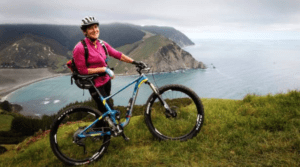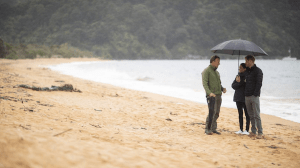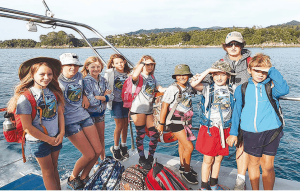By Sarah Meij, Nelson Mail – January 27 2017

Gillian Wratt participates in the Pepin Island Walk Run Bike event on Pepin Island, Nelson – photo Virginia Woolf
For Gillian Wratt her science and environmental work is much more than a paying job.
The Nelson woman’s efforts to preserve New Zealand’s nature and her work with environmental and outdoor groups has seen her recognised as a Kiwibank local hero.
“To me the environment and recreation are important to my welfare. And I think they’re important to society’s welfare, communities welfare,” Wratt said.
“I feel I’ve been fortunate because I’ve been able to get to do work that I feel is valuable, is worth doing. It’s not just going to work and getting a pay cheque, it’s going to work to do something I believe in and enjoy,” Wratt said.
“I’m passionate about the mix of the environment, science and the outdoors.”
Wratt said Cawthron Trust Foundation manager Elizabeth Bean nominated the Nelson Tasman Cycle Trails Trust, which Wratt chairs, for the awards.
“Then she said to me ‘oh we can nominate you as well’, so I reluctantly agreed.”
Wratt has spent the past 20 years working in senior executive management roles in the science and environmental sectors.
She spent 10 years as the chief executive of the New Zealand Antarctic Institute and six years as the head of the Cawthron Institute.
Wratt also chairs the Project Janszoon Trust carrying out conservation projects in the Abel Tasman National Park, and is on the board of the Environmental Protection Authority, Our Land and Water National Science Challenge, Nelson Tasman Chamber of Commerce and New Zealand Outdoor Instructors Association.



